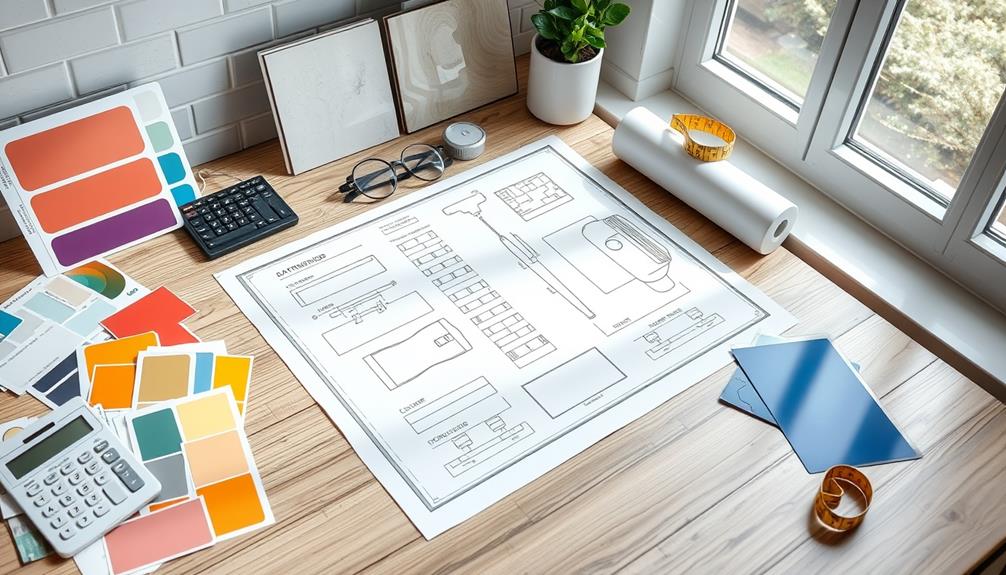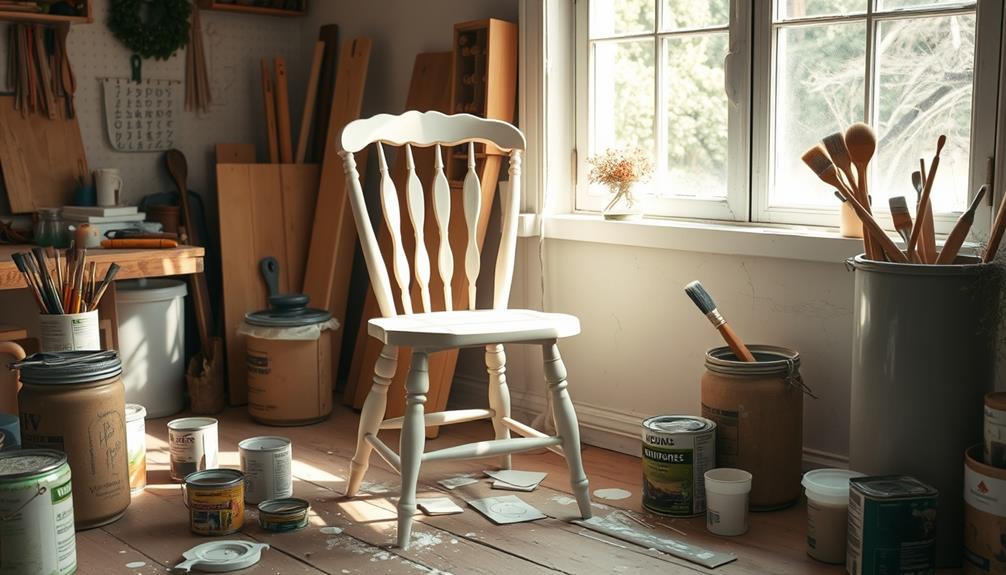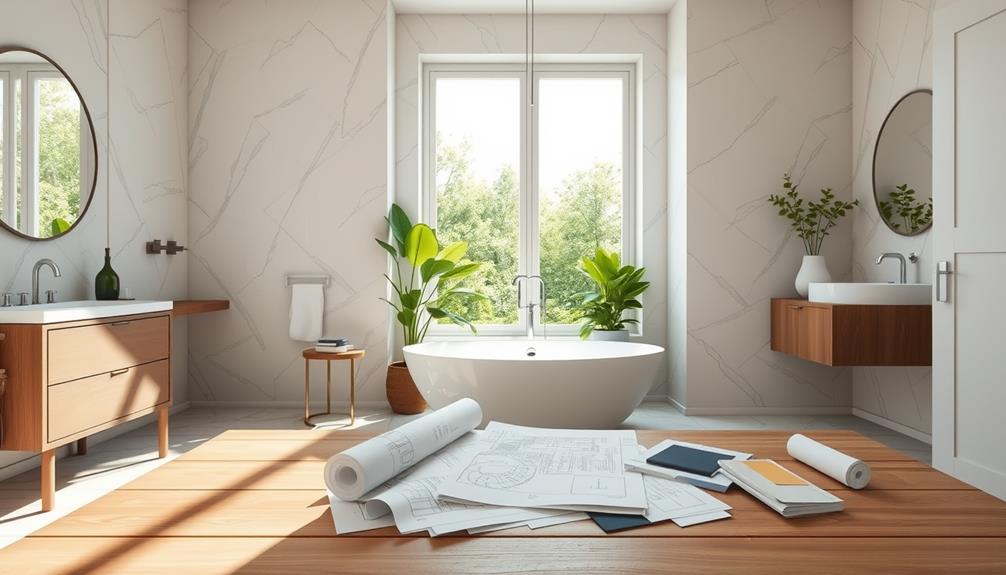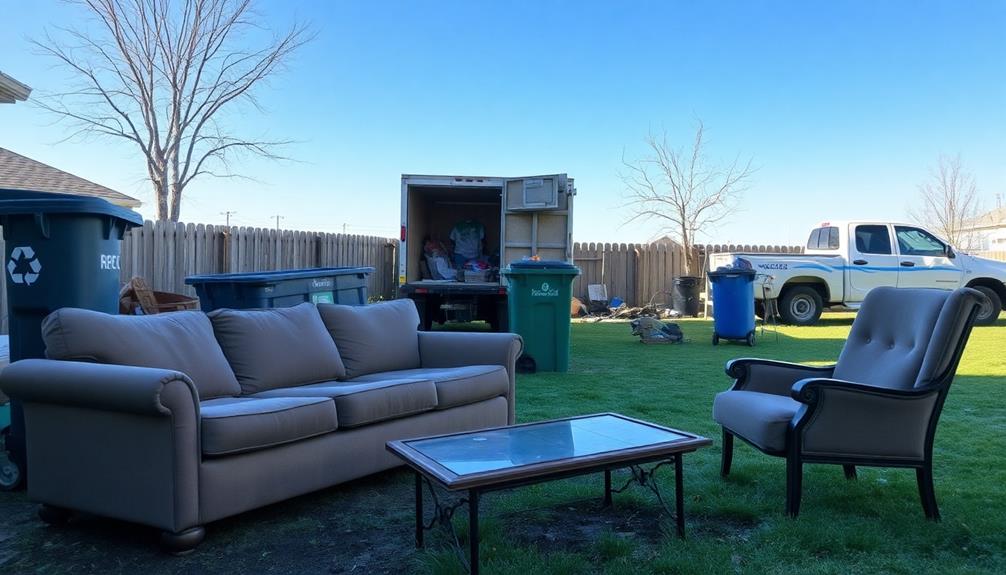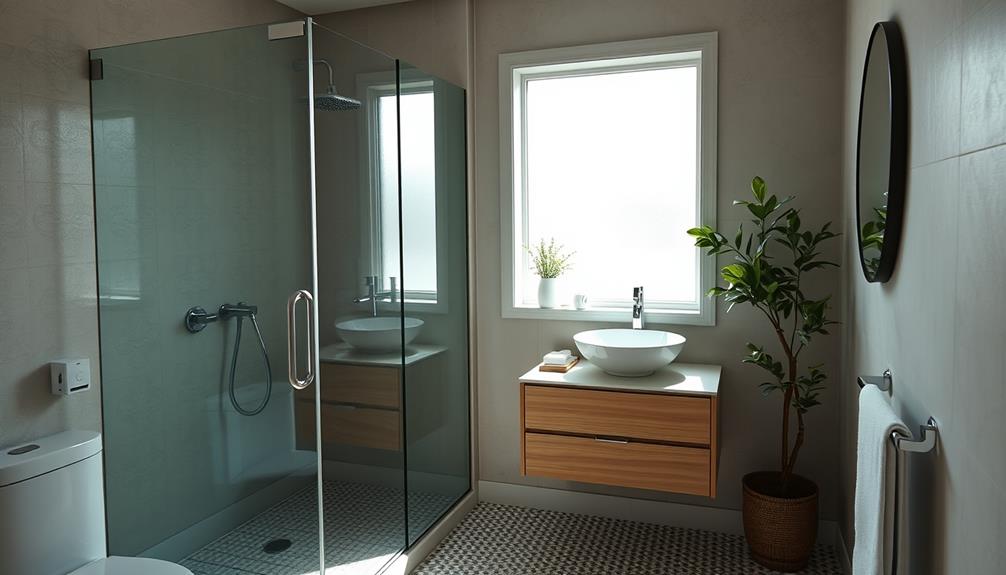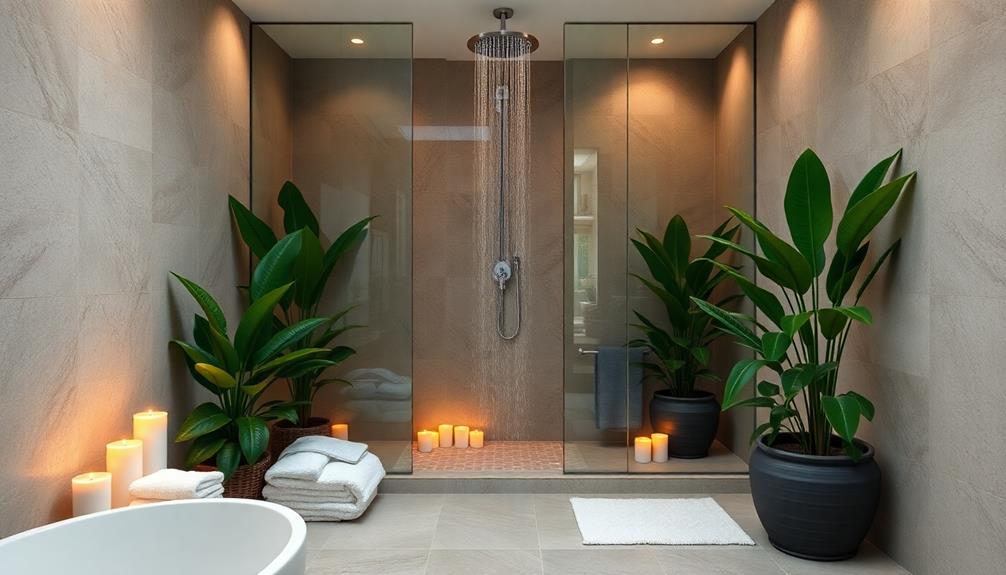Estimating the cost of a bathroom remodel involves several key factors. Start by setting a budget, with the average remodel costing around $11,550, but potentially ranging from $3,000 to over $25,000 depending on factors like size and materials. Labor costs typically make up about 20% of the total budget, while material expenses can range from $2,000 to $10,000. It is important to consider potential overages due to unexpected issues, which could add an additional 10-20% to your total cost. Keeping an itemized list of expenses and setting aside a contingency fund for unforeseen surprises is crucial for staying on track with your budget. There are many details to consider, so having a clear understanding of the costs involved will help you navigate the remodeling process successfully.
Key Takeaways
- Identify the bathroom size to estimate costs, with average remodels for full bathrooms ranging from $5,000 to $20,000.
- Compile an itemized list of materials and labor, maintaining a price list for accurate budgeting and updates.
- Consider the average material costs, which can range from $2,000 to $10,000, making up over 60% of the budget.
- Allocate a contingency fund of 10-20% for unforeseen expenses like structural issues or design changes during the remodel.
- Establish realistic timelines, typically 3 to 6 weeks, and communicate updates regularly to manage client expectations.
Understanding Bathroom Remodel Costs
When you're planning a bathroom remodel, understanding the costs involved is crucial to staying within your budget. The average cost of a bathroom remodel in 2023 is around $11,550, but you can find budget-friendly options ranging from $3,000 to $10,000. For high-end remodels, be prepared to spend over $25,000.
Incorporating energy-efficient appliances can also influence your overall remodel budget, as they can lead to long-term savings on utility bills and enhance the functionality of your space, especially if you consider innovative technology.
To create a remodel cost breakdown, consider that materials and labor typically make up the bulk of your expenses. Labor costs usually account for about 20% of the total, with the average hourly rate for plumbers between $45 and $150, and electricians from $40 to $100.
Material costs can vary widely, averaging between $2,000 and $10,000, and often represent 60% or more of the overall project budget. Specific bathroom features also impact costs; for example, bathtub installations can range from $475 to $870, while shower enclosures might cost between $510 and $940.
Ultimately, the cost to remodel a bathroom will largely depend on the materials chosen and the features you want to incorporate, so plan accordingly to guarantee you stay on track with the cost of a bathroom remodel.
Factors Influencing Remodeling Expenses
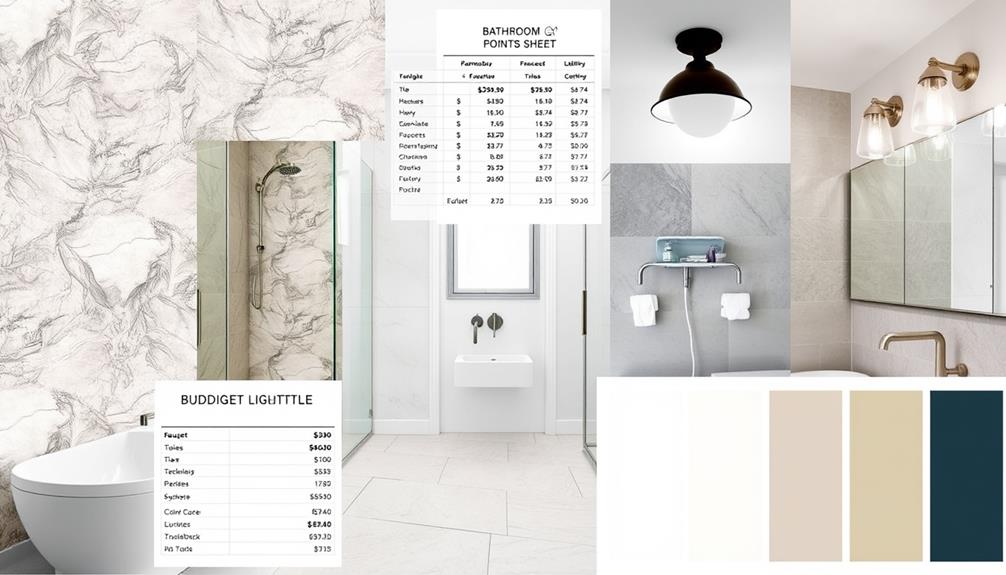
When planning your bathroom remodel, several factors will impact your expenses.
The size of your bathroom, the materials you choose, and the variability of labor costs all play significant roles in determining your budget.
Additionally, exploring your personal tastes can reveal unique design preferences, which may influence material selections and overall costs.
Understanding these elements will help you make informed decisions and avoid unexpected costs, especially when considering effective preparation to maximize your consultation outcomes.
Size of Bathroom
The size of your bathroom plays a crucial role in determining remodeling expenses. Understanding the different bathroom sizes can help you budget effectively for your project cost.
Additionally, having a clear budget plan is important to manage costs efficiently. Here's how bathroom size influences remodeling costs:
- Half bathroom (18-32 sq. ft.): Costs between $3,000 and $15,000.
- Full bathroom (20-146 sq. ft.): Ranges from $5,000 to $20,000.
- Master bathroom (40-210 sq. ft.): Generally incurs costs from $7,000 to $30,000.
- Accessibility-friendly bathrooms (20-210 sq. ft.): Can cost between $10,000 and $40,000 due to specialized fixtures.
The average cost per square foot for a full bathroom remodel can vary from $120 to $275, depending on the complexity and material costs.
As the size increases, so does the overall expense, which means larger bathrooms or more intricate designs can greatly impact your budget.
It's important to take these factors into account when planning your bathroom renovation to avoid unexpected financial surprises.
Always keep in mind that your bathroom size is a critical factor in estimating your remodeling costs.
Material Choices Impact
Selecting the right materials can make or break your bathroom remodel budget. The materials you choose directly influence your bathroom remodel costs, so it's crucial to understand their price ranges.
For flooring, options can range from an average price of $56 to $103 per 100 sq. ft., depending on the type you select. Best vacuums for dust removal can also play a considerable role in maintaining a clean environment during your remodel.
Countertops can vary even more, costing between $65 and $256 per linear foot, greatly impacting your overall expenses.
When it comes to plumbing fixtures, sinks can have installation costs that range from $460 to $1,475, with the chosen material affecting both price and durability.
If you're leaning towards high-end materials or custom cabinetry, be prepared to see your remodel budget swell; custom cabinets can set you back anywhere from $400 to $4,000.
Additionally, if you're considering accessibility modifications, specialized materials and installations could raise your budget by $10,000 to $40,000 or more.
Labor Costs Variability
Understanding material costs is only part of the equation; labor expenses can greatly affect your bathroom remodel budget. On average, labor costs hover around $70 per hour but can vary considerably based on several factors.
For instance, the demand for skilled tradespeople in your area can impact rates, similar to how top hotels with water parks adjust pricing based on location and amenities.
Here's what you need to reflect on:
- Geographic location: Urban areas often have higher wage rates than rural settings.
- Skilled labor: Complex jobs, like plumbing or electrical work, require specialized skills, which can raise costs.
- Job complexity: Layout changes or structural work take more time and expertise.
- Unexpected interruptions: Supply delays or equipment malfunctions can lead to increased labor costs.
When planning your remodel, keep in mind that hiring different professionals impacts your expenses.
For instance, plumbers may charge between $45 and $150 per hour. As you work with a cost estimator, factor in these variables to create a realistic budget.
By understanding how these factors influence labor costs, you can better prepare for the financial commitment your bathroom remodeling project entails.
Estimating Labor Costs
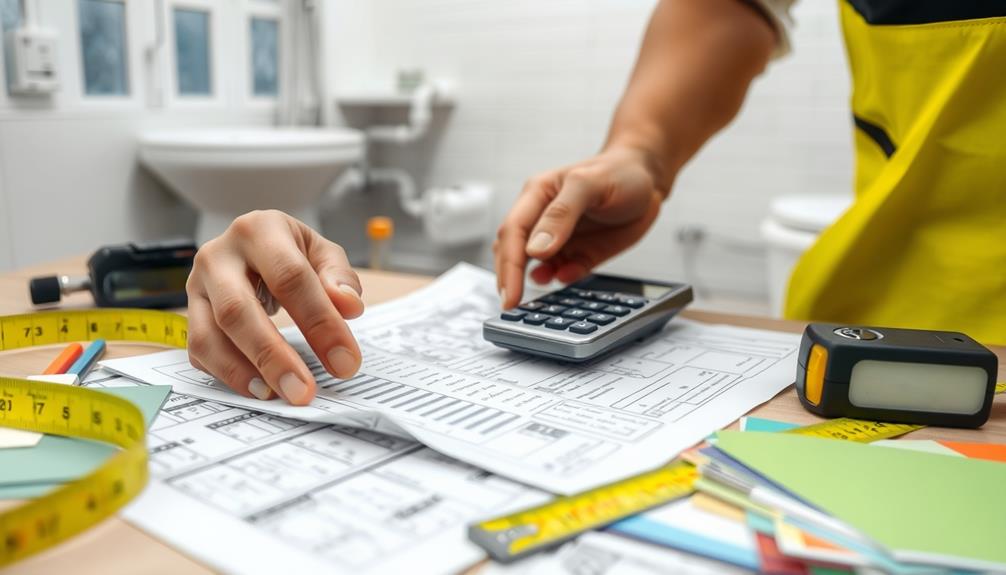
When planning your bathroom remodel, estimating labor costs can make or break your budget. Labor typically accounts for about 20% of the total remodel cost, ranging from $1,300 to $4,300 based on the project scope. The average labor cost is around $70 per hour, but this can fluctuate depending on the complexity of the work and the productivity levels of the workers.
Not every employee performs at the same efficiency, so it's crucial to factor this into your calculations. To safeguard your financial future, consider diversifying your investment portfolio, similar to how one might approach IRA rollovers to gold, which can offer protection against market downturns.
To achieve a more accurate estimate, consider incorporating potential labor interruptions, such as supply chain issues or equipment malfunctions. These interruptions can lead to unexpected delays and increased costs.
Utilizing RSMeans data can greatly enhance your labor cost calculations, helping you align your estimates with current market rates and conditions. By understanding the intricacies of labor costs, you can create a more realistic budget for your remodel.
Material Cost Breakdown
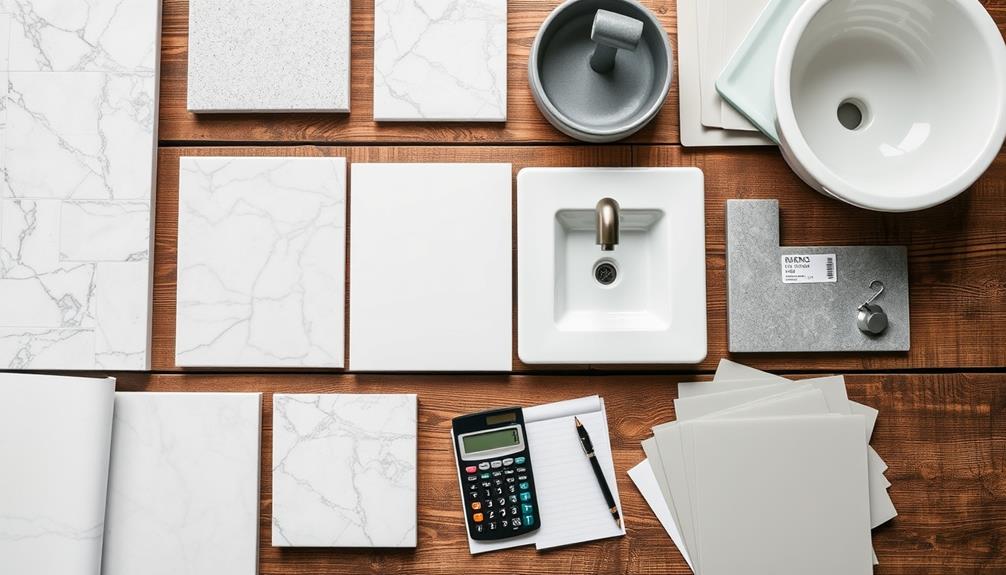
As you plunge into your bathroom remodel, knowing the material costs can greatly impact your overall budget. Understanding the material cost breakdown helps you make informed decisions, ensuring your project aligns with your financial goals.
Additionally, considering energy-efficient options can lead to long-term savings, such as those offered by energy-efficient models in heat pump systems. Here's a quick overview of average costs you might encounter:
- Flooring costs: $56 to $103 per 100 square feet, depending on the material.
- Countertops: Ranging from $65 to $256 per linear foot, based on quality and type.
- Bathtub installation: Typically averages between $475 and $870, influenced by style and fixtures.
- Shower installation: Costs vary widely, from $511 to $3,036, based on enclosure type and features.
Adding installation costs into the mix will also affect your bathroom remodel costs. For example, installing a new sink can set you back between $460 and $1,475.
It's crucial to account for these figures while creating your remodeling budget. By breaking down the material costs, you'll have a clearer picture of where your money's going, ensuring you stay on track without overspending.
Planning wisely will lead to a beautiful and functional bathroom that meets your needs.
Common Cost Overruns
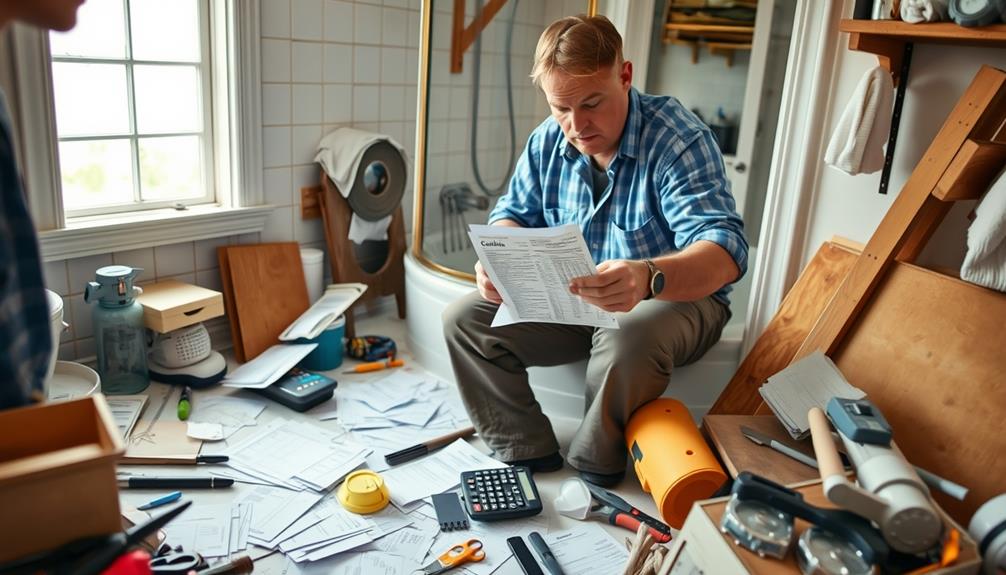
During a bathroom remodel, cost overruns can sneak up on you, often turning a carefully crafted budget into a source of frustration. One of the most common culprits is unforeseen structural issues, like mold or plumbing problems, which can increase your expenses by 10-20% beyond initial estimates.
Additionally, it's vital to reflect on the importance of selecting the right materials for your remodel, as common types of cold medications can also impact your overall costs. If you decide to make design changes mid-project, be prepared for additional costs that can rise by 5-15%.
Material delivery delays, especially for specialty items, can stall your project and lead to extra labor costs. These delays contribute greatly to budget overruns. Plus, don't forget about permitting and inspection fees; these can add anywhere from $500 to $2,000 to your total costs, often overlooked in initial estimates.
Seasonal demand fluctuations also play a role in cost overruns. During peak remodeling seasons, labor and material prices can rise by 10-30%, impacting your budget.
To avoid these surprises, it's critical to account for these potential pitfalls in your planning. By staying informed and flexible, you can better manage your remodel budget and minimize the risk of unexpected expenses.
Specialty and Additional Costs
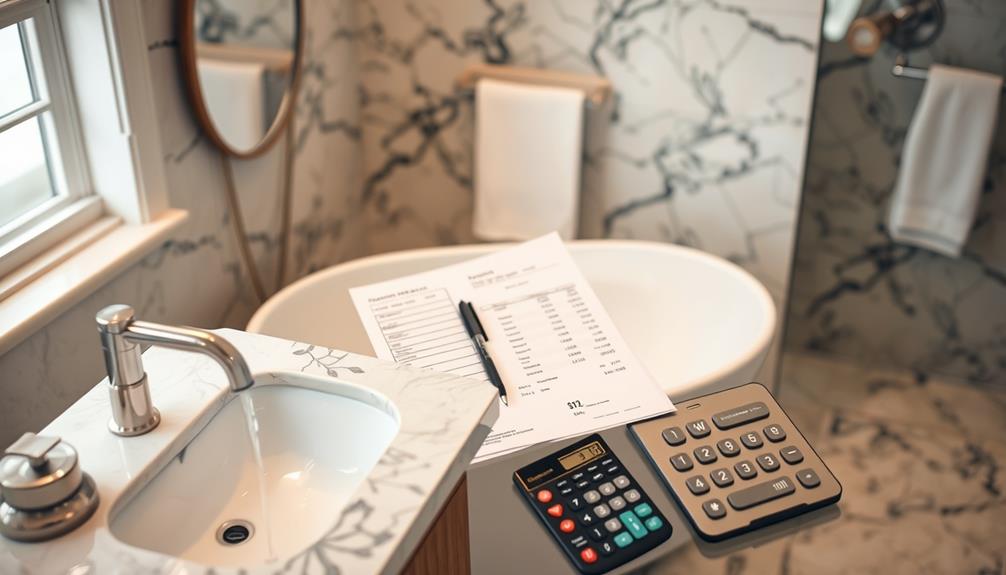
Unexpected costs don't just stem from structural issues; specialty and additional expenses can also take a toll on your bathroom remodel budget. When planning your remodel estimate, it's vital to account for these specialty items and potential unexpected expenses.
Here are some key factors to take into account:
- Custom cabinetry that fits your design vision can greatly increase costs. Investing in high-quality materials and craftsmanship can enhance your bathroom's overall appeal and longevity, aligning with the principles of content quality and topical authority.
- Permits and inspections, which vary by location, might add several hundred dollars to your total project cost.
- Specialty labor, such as electricians and plumbers, typically charge higher hourly rates, ranging from $40 to $150.
- Be prepared for equipment rentals for tasks like demolition, which could cost you between $50 and $200 per day.
To navigate these potential pitfalls, establishing a contingency fund of 10-20% of your total remodel budget is essential. This fund will help you cover unforeseen structural issues, ensuring your project stays on track financially.
Tips for Accurate Estimations

Accurate estimations are essential for a successful bathroom remodel, and you can achieve this by implementing a few key strategies. Start by maintaining a standard price list for materials and labor, updating it regularly to reflect current bathroom remodel costs. Utilize itemized lists for detailed cost breakdowns, ensuring you include square footage calculations to capture all necessary components in your estimate. Additionally, it’s important to factor in unexpected expenses by setting aside a contingency fund of 10-20% of the total budget. This will help cover any unforeseen issues or changes that may arise during the renovation process. Another useful strategy is to prioritize your wish list and allocate funds accordingly, helping you make informed decisions on where to splurge and where to save. By following these steps and maintaining a thorough bathroom remodel cost breakdown, you can ensure a more accurate and successful project outcome.
Here's a simple breakdown to help guide you:
| Strategy | Action |
|---|---|
| Review Past Estimates | Analyze previous projects for accuracy |
| Create Itemized Lists | List every item and its associated cost |
| Calculate Square Footage | Measure areas to determine material needs |
| Budget for Unexpected Expenses | Set aside 10-20% for surprises |
| Communicate Clearly with Clients | Discuss budget constraints and expectations |
Managing Customer Expectations
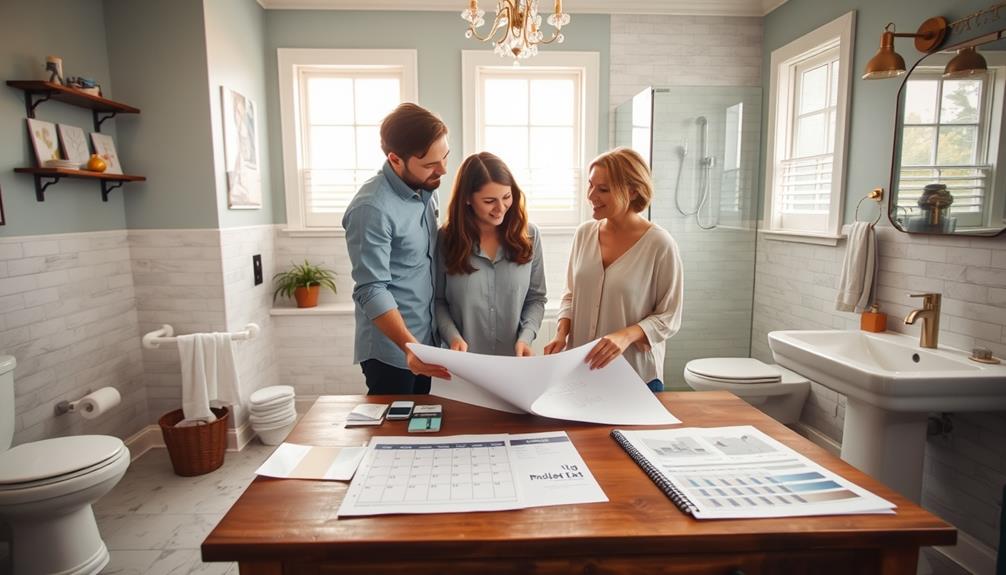
Managing customer expectations starts with clear communication.
You'll want to establish realistic timelines and keep clients informed about every stage of the remodel.
Utilizing essential oils for stress relief, such as lavender oil, can create a calming environment during the renovation process.
Clear Communication Strategies
Clear communication is essential throughout your bathroom remodel to confirm you and your contractor are on the same page. Engaging in open communication early on helps capture your customer input on desired features and styles, establishing clear expectations for the remodel outcome.
Here are some key strategies:
- Differentiate clearly between preliminary estimates and fixed-price proposals to prevent misunderstandings.
- Provide itemized lists to break down costs for materials and labor, so you see where your project cost is going.
- Maintain open communication by offering regular updates on progress and any changes to the initial plan or budget.
- Discuss budgeting for unexpected expenses, advising that you set aside 10-20% of the total project cost for contingencies.
These practices foster trust in the remodeling process. By being transparent about costs and changes, you create a partnership with your contractor.
Establishing Realistic Timelines
When planning a bathroom remodel, setting realistic timelines is key to keeping your project on track and your stress levels in check. A typical bathroom remodel lasts anywhere from 3 to 6 weeks, depending on the scope of work. However, extensive remodels may need more time for design approvals, permitting, and material delivery.
To manage expectations effectively, consider the following:
| Task | Estimated Time |
|---|---|
| Design & Approvals | 1-2 weeks |
| Actual Construction | 2-4 weeks |
| Buffer (Time Contingency) | 10-15% of total time |
It's essential to account for unexpected challenges like structural issues or delays in material delivery. Providing regular progress reports keeps clients informed and reduces anxiety during the remodeling process. Remember, clear communication about these timelines prevents misunderstandings and enhances overall satisfaction. By setting these realistic timelines, you not only streamline your remodeling process but also build trust with your clients, ensuring they're engaged every step of the way.
Frequently Asked Questions
How Much Should You Spend on a Bathroom Remodel?
You should spend about 5% to 10% of your home's value on a bathroom remodel. Consider your budget, desired upgrades, and potential return on investment to make the best financial decision for your space.
How to Quote a Bathroom Renovation?
Did you know homeowners recoup about 60% of bathroom renovation costs? To quote a renovation, gather client input, detail material and labor costs, include a contingency fund, and differentiate estimates to set clear expectations.
What Is the Most Expensive Part of a Bathroom Remodel?
The most expensive part of a bathroom remodel is often the labor costs. You'll find that skilled tradespeople charge between $70 and $150 per hour, greatly impacting your overall budget for the project.
How to Estimate Labor Cost for a Bathroom Remodel?
To estimate labor costs, you'll need to calculate hourly rates, consider project scope, and account for potential interruptions. Break down tasks into an itemized list to guarantee you capture all necessary labor requirements accurately.
Conclusion
Estimating a bathroom remodel can feel like steering through a maze, but with the right approach, you can find your way through. By understanding costs, labor, and materials, you'll be better prepared for any surprises that pop up. Remember, planning ahead is key to keeping your budget intact. So, take your time, do your research, and don't hesitate to reach out for help. With careful preparation, your dream bathroom is within reach! If you’re looking to make the most of a smaller space, consider exploring small bathroom design ideas that maximize functionality and style. From clever storage solutions to space-saving fixtures, there are plenty of ways to create a beautiful and practical bathroom, regardless of its size. By incorporating these ideas into your remodel plans, you can achieve a stunning result that meets your needs and fits your budget.
